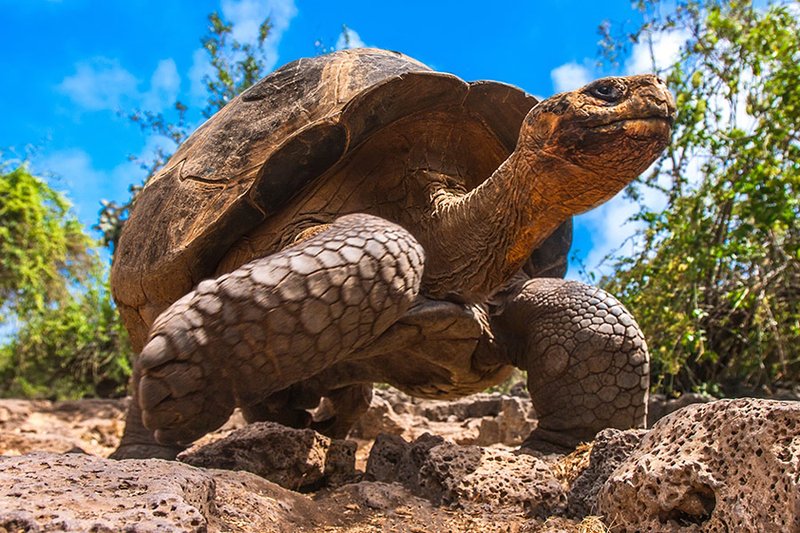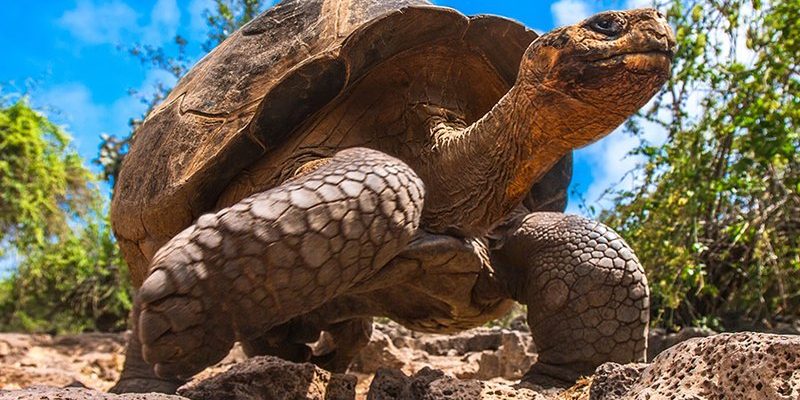
Let’s dive into this topic together, discussing their current status, the challenges they face, and the efforts underway to protect them. Think of it like a journey across these beautiful islands, exploring the ups and downs of the Galápagos tortoise’s survival and what we can do to help.
What Makes the Galápagos Tortoise Unique?
Galápagos tortoises are not just any turtles; they are the largest species of tortoise in the world, with some individuals weighing over 900 pounds and living more than a century! Their shells come in various shapes and sizes, depending on the island they inhabit. For instance, tortoises from the drier islands tend to have saddle-shaped shells, while those from wetter islands have domed shells.
These tortoises are herbivores, munching on grasses, leaves, and fruits. You might say they’re nature’s lawnmowers, helping to maintain the ecosystem’s balance. Their slow movements and calm demeanor add a certain charm to the islands, making them a favorite among visitors.
But here’s the thing: their unique adaptations don’t just make them fascinating; they also put them at risk, especially as their habitat faces various threats. So, what’s happening with these remarkable creatures?
The Current Status of the Galápagos Tortoise
The Galápagos tortoise is classified as *Vulnerable* by the International Union for Conservation of Nature (IUCN). This is a step below *Endangered*, but make no mistake—*vulnerable* means they still face serious risks. Various factors have contributed to their status, and understanding these can help clarify the challenges ahead.
Historically, hunting and habitat destruction took a significant toll on their populations. In the 19th century, these tortoises were hunted for food, which drastically reduced their numbers. Today, conservation efforts have led to some recovery, yet they are still threatened by invasive species, climate change, and human activity.
It’s a delicate balance. While their numbers have begun to rise thanks to dedicated conservationists, there’s still a long road ahead.
Major Threats to Their Survival
So, what’s putting the Galápagos tortoise at risk today? Unfortunately, several major threats continue to challenge their survival:
- Invasive Species: Animals like goats and rats pose a significant threat. Goats compete for food, while rats eat tortoise eggs, making it harder for these creatures to reproduce.
- Climate Change: As temperatures rise and weather patterns shift, the habitats that tortoises rely on are changing too. Altered rainfall patterns can affect food availability.
- Human Activities: Tourism can lead to habitat destruction and pollution, while illegal hunting still occurs in some areas.
These threats intertwine, creating a complex web that makes survival more challenging. The good news? Conservation efforts are actively addressing these issues, giving hope for the future.
Conservation Efforts: What’s Being Done?
Conservationists and local organizations are working tirelessly to protect the Galápagos tortoise. Various strategies are in play:
- Captive Breeding Programs: These programs help increase tortoise populations. Young tortoises are raised in safe environments before being reintroduced into the wild.
- Eradicating Invasive Species: Efforts are underway to control or eliminate invasive species threatening tortoises. This includes removing goats and protecting nesting sites.
- Education and Awareness: Local communities and tourists are educated about the importance of these tortoises and how to protect them. This is crucial for fostering a culture of conservation.
These efforts contribute to creating a safer environment for Galápagos tortoises, but it’s a team job. If you’re planning a trip to the Galápagos, being a responsible traveler helps too!
The Role of Local Communities in Conservation
One of the most inspiring aspects of conservation is seeing local communities step up to protect their unique environment. In the Galápagos, residents play a crucial role in safeguarding the tortoises.
Many locals are involved in conservation programs, helping to monitor tortoise populations and educate others about the threats they face. These initiatives have created a sense of ownership among the islanders. They understand that protecting the tortoises means preserving their heritage and the unique biodiversity of the islands.
For example, community-led tours educate visitors about the tortoises while funding conservation projects. It’s a win-win situation—you get to learn about these amazing creatures, and your visit helps support their survival.
Future Outlook: Can We Save the Galápagos Tortoise?
Looking ahead, the future of the Galápagos tortoise hangs in the balance. The good news is that concerted efforts are showing positive results. Conservationists have reported increases in some tortoise populations due to their dedicated work.
However, the challenges remain daunting. Climate change, invasive species, and habitat destruction continue to threaten their existence. The key is continuous action and support for conservation programs.
As individuals, we can help too. Whether it’s supporting wildlife conservation organizations or being mindful travelers, every little action counts. It’s our collective responsibility to ensure these tortoises don’t just survive but thrive.
So, is the Galápagos tortoise endangered? While they are currently classified as *vulnerable*, they are far from out of the woods. These incredible creatures symbolize the delicate balance of ecosystems and highlight the impact humans can have—both positive and negative.
By understanding the challenges they face and supporting conservation efforts, we can help ensure that future generations get to experience the wonder of the Galápagos tortoise. Together, let’s work toward a future where this iconic species continues to roam the islands, reminding us of the beauty and fragility of our natural world.

